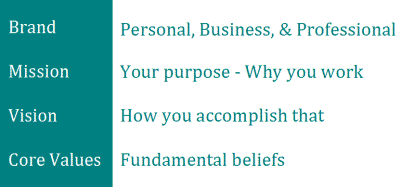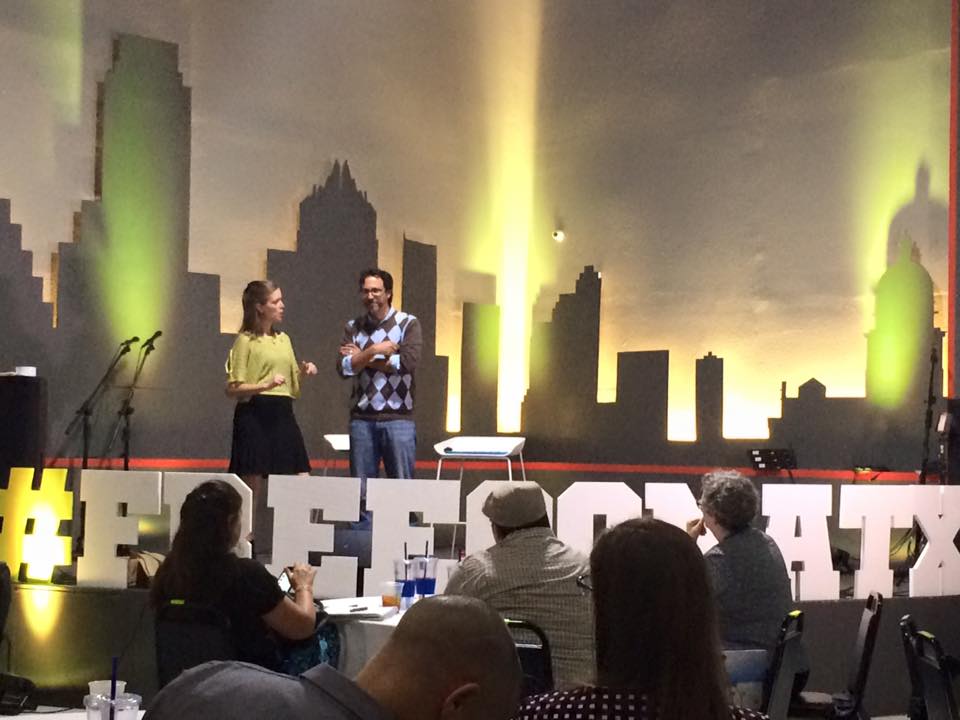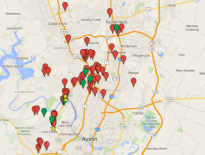
Some time ago, I shared some thoughts about how the size and scope of Silicon Valley eludes most entrepreneurs. That, challenging most startup communities, is the fact that comparing and contrasting one’s local economy to “Silicon Valley” easily misleads, as N. California’s startup community is much more than a city, more than a region even, Silicon Valley is a philosophy.
This appreciation is critical in understanding our technology economy, venture capital, and more: Silicon Valley is not a location, it’s an ideal. And therein is the subtle implication of why where matters.
As entrepreneurs, founders, consultants, and freelance professionals, our understanding of where we work is critical to knowing the market in which we find ourselves, the culture and work ethic of professionals therein, and why you have a role.
Article Highlights
Be in the Business of You
| As we explore why where matters, let me clarify the context of this article as you may want to read along with the accompanying slides.
About six years ago, my family and I left the Bay Area for Austin, TX. In my time here what has struck me most about the Austin economy is not the exciting exuberance, growth, nor passion locals have for entrepreneurship but this context of where because, indeed, people in my new home think differently of where, than the people of my old. The reason for the slides is that I had the distinct honor of speaking to some esteemed Freelancers at the Freelance Conference. Emily Leach, conference founder, approached me some time ago with a thesis, having read my article, she asked, ‘How does the idea of where we work matter to people working for themselves?’ Consider the breadth, the scope, of where you live and work. The size of the economy, the distance people are generally comfortable commuting, the number of “nodes” through which you can connect with potential clients and customers. |
| “nodes”? Coworking spaces, incubators, and other epicenters for professional collission |
 ustin, given where I now live and the location of the recent Freelance Conference, is roughly as significant as is seen in the presentation; from Lady Bird Lake south of downtown to 183 and from Mopac to the 35. Of course, people work north and west as well as south and east of those boundaries but likewise, the northern region of that radius isn’t as dense as downtown so for the sake of consideration, think of Austin’s work population as roughly as regionally established as that. ustin, given where I now live and the location of the recent Freelance Conference, is roughly as significant as is seen in the presentation; from Lady Bird Lake south of downtown to 183 and from Mopac to the 35. Of course, people work north and west as well as south and east of those boundaries but likewise, the northern region of that radius isn’t as dense as downtown so for the sake of consideration, think of Austin’s work population as roughly as regionally established as that.
|
When we apply the same scope to a map of Silicon Valley, we only cover the San Francisco workforce and economy. With this contrast, I realized why many Austin entrepreneurs “go to San Francisco” when raising capital; Austinites think of themselves in the context of the city of Austin and as such, many consider Silicon Valley to be established in San Francisco.
Where we work defines us. The philosophies and culture of the city in which we live, influence who we are, what we do, how, and why. When it became clear to me that the entrepreneurs of Austin were generally working within the domain of Austin, I explored the core values that you might say define wherein we’re working.
LifestyleBalanceBootstrapLeanEntrepreneurial |
AmbitiousDisruptionInvestmentExperiencedCollaborative |
On the left, characteristics that I think most would agree define the Austin economy. On the right, characteristics of working in Silicon Valley. One can imagine already how where one works defines how one works.
![]() Looking out at thhe Valley, zooming out, we encompass a region of the United States contributing $325 billion to our GDP. From San Francisco to San Jose, commuters brave the 101 to live and work throughout the region. Looking to a map of Austin at the same scale, people chuckle at the thought of living in Marble Falls but working in Bastrop and while living in San Marcos but working in Georgetown doesn’t seem so preposterous, who would dare brave the 35 for such a commute!?
Looking out at thhe Valley, zooming out, we encompass a region of the United States contributing $325 billion to our GDP. From San Francisco to San Jose, commuters brave the 101 to live and work throughout the region. Looking to a map of Austin at the same scale, people chuckle at the thought of living in Marble Falls but working in Bastrop and while living in San Marcos but working in Georgetown doesn’t seem so preposterous, who would dare brave the 35 for such a commute!?
Austin’s “where” is far different from that of Silicon Valley’s and profesionals working in one place or the other have not only very different cultures but distinct concepts of the physical boundaries of where they work. The size and scope of Silicon Valley, the idea that is Silicon Valley, prevents anyone from working there from thinking of themselves as working in San Jose, Redwood City, or San Francisco: people there work in tech.
Interestingly, as I write this, I find myself in San Antonio for a board meeting and to connect with some investors. I’m among the dozens of Austinites who frequently travel to San Antonio to collaborate with VenturePoint’s Luis Escobar, Peter French, and Randy Meriwether to name a few. You see, in my mind, when we shift that Silicon Valley radius overlayed on Austin south, we reach San Antonio. In the minds of some, in the minds of increasingly many, Austin and San Antonio are becoming an economic region and while some professionals still think of themselves as working only in Round Rock, or Cedar Park, or downtown Austin, or East Austin, many are waking up to the fact that where we work is far greater in size, scope, and potential.
Why Where Matters
Simon Sinek, author of one of my favorite books, Start With Why, challenges us to “Imagine a world where people wake up inspired to go to work.” Where. You no doubt stumbled onto this article reading the title as offering why where you are matters, but as I pulled together my thoughts for the speech and remembered the Sinek philosophy that drives the work I do with startups, it occured to me that Why and Where are intrinsicly joined. Why you work is defined by Where you work and thus to understand why Where matters, we have to consider both Why and Where matters.
Why do we work where we do? Why do we stick to downtown Austin or San Antonio? To Dallas but not Fort Worth? Why do some work in “Silicon Valley” even though they live on the other side of the world? The answer lies in one of three possibilities:
- Because it’s convenient
- Because it’s what I know
- That’s where the market is found
 Where and Why are intrinsically connected because the economy in which you work is the result of the shared philosophies and culture therein. The philosophies of the people around whom you live and work define the local culture. Culture creates communities. Communities create businesses and businesses foster industries and industries blend to drive economies. Where do you work? Why?
Where and Why are intrinsically connected because the economy in which you work is the result of the shared philosophies and culture therein. The philosophies of the people around whom you live and work define the local culture. Culture creates communities. Communities create businesses and businesses foster industries and industries blend to drive economies. Where do you work? Why?
Understanding where you work serves to define your purpose, your mission; that is, why people would hire you. And though it can be difficult to do, particularly as a freelance professional in need of clients, embracing that your practical location is dwarfed by the industry you best serve results in more demand and higher rates. You may be a photographer living in Austin, as is Mike Holp, who’s work he offered me to show here, but your market is severely limited when you define yourself by location alone. Instead, Holp’s work is notable because of his use of an arial drone. If you’re a restaurant in need of a local photographer, there is an endless list from which to choose but when you want arial photos of a campus, office park, trail, or city, Mike Holp stands out because he’s defined his business in the context of where as a distinction of his business rather than a limited location.
Consultants and freelancers who truly excel push their brand even further, turning away clients who are not only not in the same industry but not even the same stage. Take myself for example, I don’t work with seed stage startups, small businesses, nor Fortune enterprise companies. Can I capably serve that stage of growth? Sure, I suppose I can, but in recognizing that I work with tech enabled companies (my industry) and mid-growth stage ventures seeking (and deserving) venture capital, the clients I best serve become clearer to my network and my peers and I’m able to collaborate with my peers by referring to others who might otherwise be considered local competitors because I specialize in companies within a particular industry working at a particular stage. My purpose. My Why.
Be In The Business Of You
 You are a business. Sinek tweeted earlier this year:
You are a business. Sinek tweeted earlier this year:
“At well led companies, people talk about the strength of the values. At poorly led companies, people complain about the pay & benefits.”
Wise words. Are the core values of company-of-you clear? Are you clear on your purpose? Have you defined your why and have you thought about your where? Like a great company, these notions are established in your mission, vision, and values.
Mission, Vision, and Values
Defining your personal mission is not an easy task and the process of developing these critical and fundamental characteristics of a business are the arena of consultants and advisors who nurture founders and executives through exercises of discovery. Frankly, I have an easier process for you to consider and before we start with why, start by considering these two renoun mission statements:
To organize the world’s information and make it universally accessible and useful.
To give people the power to share and make the world more open and connected.
Not familiar with them? I wouldn’t be surprised as you’ll note that the mission of these companies say nothing of what we, as consumers, consider them to be. Your mission, that of the business of you, needs to establish your purpose; your why, where, and for whom. Google’s mission, “To organize the world’s information and make it universally accessible and useful,” says nothing of being a search engine, Gmail, YouTube, Nest, nor driverless cars because their purpose, the reason they exist and the reason people clamor to work with and for Google is because their mission and vision are clear.
- Why: to make the world’s information universally accessible and useful
- Where: the world’s information
- For whom: the world
Lofty goal, no? Now we might better appreciate why Google is Google and why Facebook, the brand in front of that second mission, is Facebook.
The process of developing your mission and vision is as simple as an elementary school lesson: Who, What, When, Where, Why, and How. But remember, we start with why. In building a successful venture, or as I tell my startups, in developing the perfect pitch, you communicate what matters most first: Why, Who, Where, What, When, then How.
Think about that a moment as I’m sure it feels alien to communicate that way. In every message you convey about your business, Why is most important. Not what you do nor how.
Photographers in town are a dime a dozen and in my work with startups in Austin, I’m constantly seeking front end developers, writers, graphic designers, and other freelance professionals. I’d wager that 99% of those that apply for the work that I have, submit a resume and portfolio and 100% of those end up in the digital wastebin. When you communicate only what you do and how, you are no more distinct from the hundreds of other professionals in town and regardless of the quality of your work, are certainly not aligning yourself with the distinct industry and stage of the potential client. You are failing to convey your passion and the reason why anyone should hire you over anyone else.
From Where to Why
To stand out from the crowd you must be clear on the reason you work. Your mission and vision, born of your purpose, born of why you work, born of where you work and the cultures and philosophies therein establish that someone should hire you. And you would be wise to note that when hiring just any old writer or designer, even a good one, you are considered a commodity and the compensation afforded a commodity is as rich as it sounds. Have you been struggling to get paid what you consider a fair wage? Are you considered the best freelance designer for new food truck restaurants? Are you considered the ideal writer for mid-stage mobile app companies? Or are you a portfolio and a location?
Figuring out your mission and vision is as simple as why, who, where, what, when, and how because your mission, your purpose, is summed up in why, for whom, and where. From why to where. Your vision establishes how you intend to fullfill that mission and is succintly comprised of what, when, and how. Underlying your mission and vision are core values: 1-2 word, unwavering characteristics which you hold in the highest regard – pillars on which your mission and vision stand.
 Don’t misunderstand me, defining your mission, vision, and values takes patience, introspection, and iteration. Invariably, in the pitch training that I do, founders can’t help but say what they are doing and how; I’m expect you’ll struggle at the next networking event you attend to avoid saying what you do and how but when you lead with why, a statement that is truly just why and not what, your professional networking world changes as though you’ve discovered you’re in the Matrix and there is no spoon. Suddenly, people know you, your work, and your passion.
Don’t misunderstand me, defining your mission, vision, and values takes patience, introspection, and iteration. Invariably, in the pitch training that I do, founders can’t help but say what they are doing and how; I’m expect you’ll struggle at the next networking event you attend to avoid saying what you do and how but when you lead with why, a statement that is truly just why and not what, your professional networking world changes as though you’ve discovered you’re in the Matrix and there is no spoon. Suddenly, people know you, your work, and your passion.
Let’s wrap this exploration of where why matters with a challenge. A challenge that you expose your passion and share your mission, vision, and core values. I’ll give, in hopes that you get to know me a little better:
Paul O’Brien’s Mission
To accelerate later stage venture capital access and adoption in Texas.
Paul O’Brien’s Vision
Enable market intelligence and marketing experience to foster media sophistication and efficiency in collaboration.
Paul O’Brien’s Core Values
Collaboration, Disruption, Innovation, Analytics, Earning, Credibility, Commitment, Openness
Notice how my mission says nothing of being a marketing consultant, startup advisor, nor SEO (especially not SEO as god forbid, people think I do that!). My core values, the attributes of my work and the characteristics in which I look to others who might be my partners or customers, align a little with those qualities of Silicon Valley (disruption, innovation, and collaboration) for though I’m at home in Austin, TX, I still work in (the ideal of) “Silicon Valley” and where I work ultimately defines why I put up with Austin traffic every morning to get out there and make a difference.
Help others get to know you, in the comments, and better appreciate how to communicate this way by publishing the mission, vision, and core values for the business of you and remember to start with why by appreciating where.



Go Paul!
Insightful article! Thanks for the photo credit.
Holp’s Mission
To capture the true essence of my subjects on camera.
Holp’s Vision
To go boldly where no man has gone before! But let’s not get carried away.
Holp’s Core Values
Courage, Diligence, Exposure, Growth, Inspiration, Passion, Reputation, Wisdom
ikigai
Thanks Deb and Mike, and Patrick, the wonders of social media: I’d never heard of ikigai but that’s precisely what were talking about.
Great article Paul. As someone relatively new to Austin, this is insightful about what makes this city’s business culture unique. It’s also a good reminder to focus, focus, focus.
This is a little bit of a work in progress, but here it goes… (Also, I have learned a slightly different definition of purpose, vision, and mission, but you’ll get the idea)
Purpose (Our why/ Our core value): We believe the people who own their own their challenges and self-power are the ones who inspire the world.
Vision (The bigger picture): To empower businesses to own their visibility
Mission (the what): We enable businesses to raise their visibility in Search Engines by identifying core differences and collaborating on conveying those on the web. We also execute true and just Search Engine Optimization.
This looks awesome wish I’d known it was going on!
Paul, you are a delight. I did put up with you, and it was completely worth it. wink emoticon Well done, sir.
Next time, 1 day’s notice? Just for my sanity?
Great article Paul O’Brien. To those reading I highly recommend you click the Here’s why link at the end of the article and read the full text about why “Why” matters to your business-of-you.
Thanks Gregg! Yeah…. I weighed publishing the entire, in-depth article vs. this brief. Hope folks jump through as we get into a discussion of how do establish the purpose and vision of not just you but your business.
Hi Paul, Great article and insight. FYI- Your geographical coverage for ‘Silicon Valley, can be extended to the East Bay for areas like Walnut Creek, Danville, Pleasanton, Livermore and beyond as many Silicon Valley workers like myself have commuted on the i-680 corridor for years. Thus the Silicon Valley Footprint is much larger than the original 13 mile stretch along Hwy 101.
Oh it most certainly is as significant Dennis, good point. We can only blow people’s minds so much at a time. Molly Cain made a wonderful point this morning at the TechBreakfast, Ask a VC event in Austin: be a part of the movement to think in terms of “Texas.”
Not even DFW rivals Silicon Valley or the NE ecosystem in terms of size and scope so why do we here in Texas still in think so much in terms of our respective cities?! The future of America’s innovation economy is where we are, we need to start thinking in terms of the significance of the Texas Corridor.
Paul – A great piece. Austin (and anywhere for that matter) thrives when it’s true to itself and its distinct character and strengths.
Yes! The challenge is knowing what that “self” is
Thank you Melissa!
Wow! Paul…spot on! I think the “Austin region” can actually expand out to Dallas, Houston, Waco, College Station, and be one of the largest ecosystems in the US, if not the world. I would love to work on making that happen. #Music #Tech #Education #Art
Do you believe we could do just that?
@seobrien you wrote this in 2015, what’s the biggest thing you were right about and the most important thing that has changed in #Austin since?
I think Austin has become the shining example, a case study, of my point. I wrote this around the same time, as a focus of the idea on my industry (Media): https://seobrien.com/the-vision-for-austin
And what has happened since ’15? CPG, Food, PropTech, etc.
We focused on WHY Austin and thrived